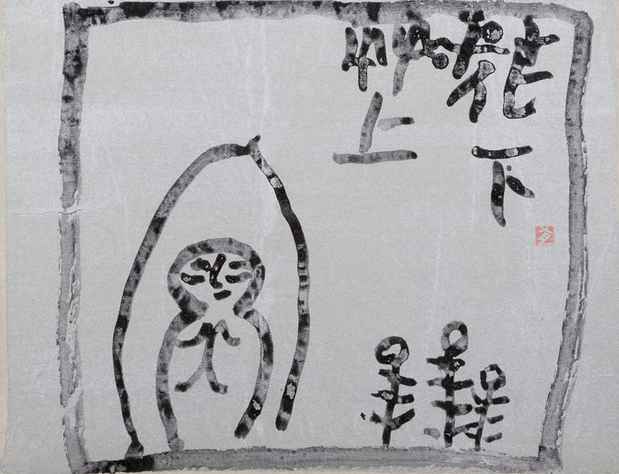“Strength of Character: The Abstract Calligraphy of Japanese Master Inoue Yuichi” Exhibition
Onishi Gallery

This event has ended.
Onishi Gallery present the masterful work of famed Japanese calligrapher Inoue Yuichi (1916-1985). Seventy years after end of World War II, Inoue continues to be hailed as one of the foremost post-war artists for his radical redefinition of traditional Japanese script. Filling large sheets with thick black strokes, splatters, and dots, Inoue’s calligraphy merges traditional character-based design and modern abstract art. His larger-than-life strokes are traces of his full body movement, inked gestures of emotion, vision, and skill.
InoueYuichi began studying calligraphy at the age of 25, exploring both standard and experimental styles as a response to the Abstract Expressionistic art. By the mid-1950s, his work had begun to receive public acclaim through his participation in high profile international art fairs. His calligraphic expression emphasized an abstract quality as Inoue increasingly rejected conservative calligraphy, and soon co-founded Bokujin Kai, an avant-garde society for calligraphy that drew inspiration from Western abstract expressionist art movements. As his recognition grew, Inoue championed a move towards freedom in calligraphic artwork, an effort to break the boundaries of conservative calligraphic style. He worked on oversized sheets of paper with large grass brushes and dipped them in black ink with abandon. The work Inoue produced was called “action painting,” for he beat, splashed, and stroked the paper with the strength and flexibility of his entire physical self.
Beyond the beauty of his strong, textured gestures, Inoue’s abstract expressionism speaks to viewers in another way—through the actual text. Inoue created single- and multiple-character phrases, often communicating Buddhist sayings or poems, Chinese lyrical texts, or even political messages rooted in his own experience of the 1945 air raid on Tokyo. He became most widely-recognized for his majestic, large-scale single-character works, however, often coming back to many of the samekanji, including haha (mother), ko (filial piety), yama (mountain), taka (hawk), tai (tranquility), fune (boat), tori (bird), no (whereupon), taru (content), fun (behead), and jo (above). His ability to rework these single characters throughout his career spoke to a strength of mind and freedom of interpretation that is evident in both the discipline and liberation that characterize his practice. Inoue’s ability to link the Japanese kanji character alphabet with an ever-emerging artistic process makes his work fresh, inventive, and lasting.
On this 100th birthday year of a radical Japanese artist who re-envisioned the fundamental communicative unit as a form of aesthetic, emotional, and physical expression, join us to celebrate Inoue Yuichi.
Media
Schedule
from March 24, 2016 to April 09, 2016
Opening Reception on 2016-03-24 from 18:00